
CISRA Puzzle Competition 2011 - Solutions
1C. Welcome to the Machine
There are several features about this puzzle that may help lead to the solution.
- The title "Welcome to the Machine" and the appearance of the puzzle indicate gears and cogs.
- There are 30 "units" around the circle – seven double-width cogs, and sixteen single-width cogs.
- Three of the cogs (at roughly two o'clock, six o'clock, and eight o'clock) are joined to the central circle. Starting at 2 o'clock, the next cog is eleven cogs along (counting double-width cogs as two), then five cogs to the next, and finally fourteen back to the first.
- You may observe that the names Celia and Alice are anagrams of each other.
If you convert the distances between cogs into letters (using 1=A, 2=B, etc.), the cogs joined to the central circle spell "ken", which is one of the names written on the gear. You might arrive at this by counting around the cogs, or by looking at properties of the names written on the gear – all six names have the property that if you convert the letters into numbers, they add up to exactly thirty.
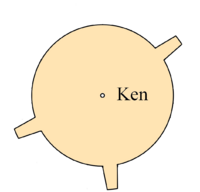
However you arrive at this intuitive leap, the next step should logically follow – convert the other five names into gears using the same rule.
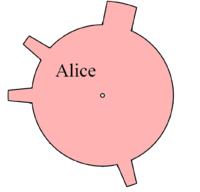
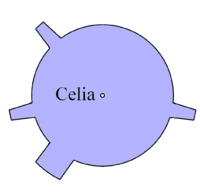

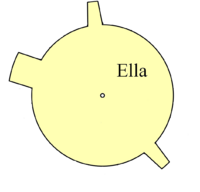
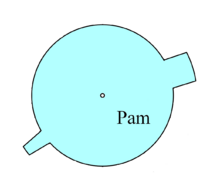
In doing so, you may observe that the letter "a" results in two cogs in a row. The next intuitive leap is to realise that in this case you should join the two cogs together into a double-width cog, as seen in the puzzle and as shown above.
When you have the gears for each person, the next step is to cut the gears out and try to orient them such that they superimpose without any overlap, and such that any double-width cogs match the positions of the ones in the puzzle. (The gears shown above are already in the correct orientation). It takes a little experimentation, but there is only one way all the cogs fit together. You may wish to start with the ALICE gear, which only fits in one place (the double-width cog can only match double-width cogs in the puzzle, and the single-width cog can only match single-width cogs in the puzzle.) From there, it should be fairly straightforward to get:
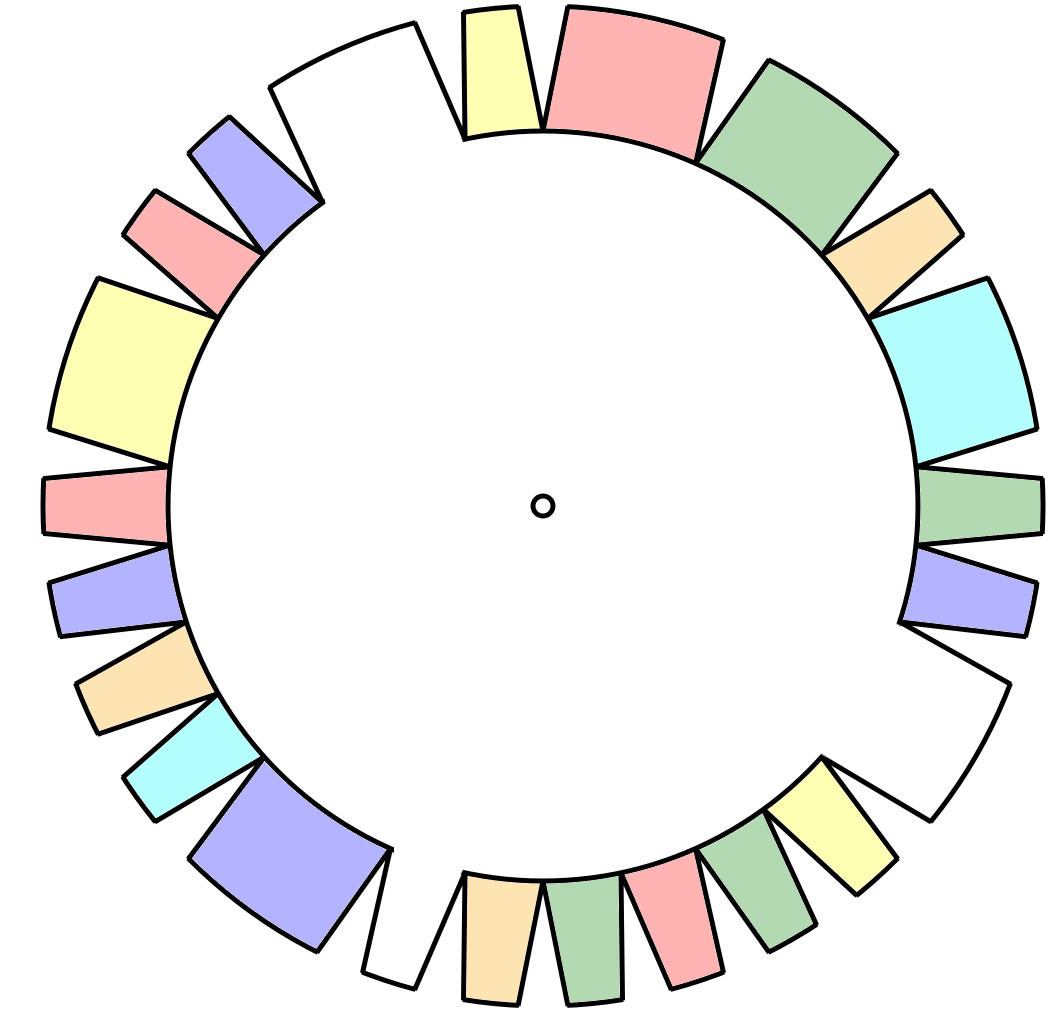
The missing gear has spaces between cogs of 1, 11, 1, 6, 11, or AKAFK. There are therefore five possibilities for the name on the gear: AKAFK, KAFKA, AFKAK, FKAKA, or KAKAF.
Franz KAFKA was a novelist, whose novels The Trial and The Castle and the novella The Metamorphosis explore themes of alienation and persecution, often by faceless bureaucracies. Or to put it another way, the idea of people as gears in a machine. The answer is KAFKA.
Incidentally, we should probably also have allowed answers of "FRANZ" or "FRANZKAFKA" – that was an oversight on my part.
Puzzle design notes:
Oddly enough, this puzzle started with a theme of juggling. I enjoy juggling, and for many years have been interested in the juggling notation Siteswap, which is a numerical abstract description of juggling patterns. Siteswap patterns are series of numbers (e.g. "51", "53145305520") that describe how high to throw each ball (a 5 indicates that you should throw the ball so it lands 5 units in the future. A 0 indicates an empty hand.)
For any puzzle creator, a sequence of numbers is pure gold, of course, and I immediately started trying to construct siteswap sequences that spelled out words with each ball. I wrote a python script that found all words that had sums of letters equal to 26 (which proved not quite usable, so I increased it until I got a good set of words at 30). Then I realised there were quite a few people's first names with this period, and particularly excitingly, the name Kafka.
The new theme jumped out at me, and I started attempting to construct a siteswap that included only given names and Kafka. I used another python script to exhaustively search for names that fit together, using a set of names that included (as well as the eventual winners) Anna, Jane, Jean, Joe, Mel, and Abby. Luckily, one set of names fit perfectly, and I had my puzzle.
The pattern of "Welcome To The Machine" is a seven ball siteswap juggling pattern: 1c14b1d5916c29i5b13ge53155c1bc (numbers are expressed in base 36, so a=10, b=11, etc.) which you can view yourself using (for example) Juggling Lab.